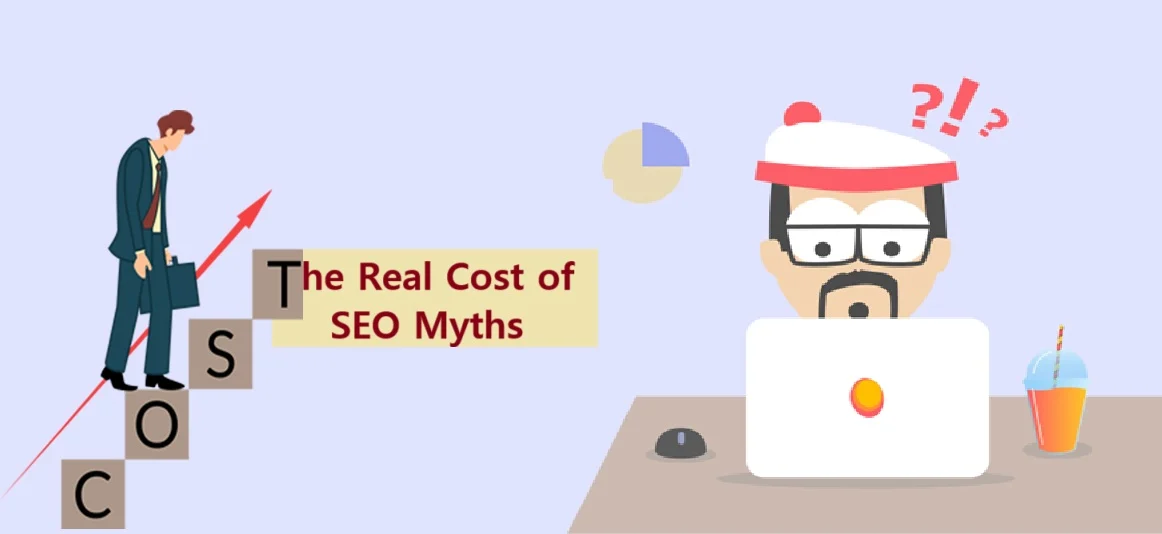Have you ever lost a client—not because your SEO didn’t work, but because they misunderstood what SEO actually is?
I’m Rhett DeMille, founder of PalmettoSoft, and I’ve been helping businesses grow through SEO for over 20 years. In that time, I’ve seen firsthand how myths and outdated ideas can quietly damage client trust, derail campaigns, and drain revenue from agencies that are doing everything right.
The truth is, SEO myths are everywhere. Clients hear them in seminars, read them in outdated blog posts, or pick them up from freelancers promising shortcuts. Left unchallenged, these misconceptions create unrealistic expectations that good work alone can’t fix.
In this post, we’ll look at some of the most common SEO myths, where they come from, why they’re dangerous, and how to educate your clients the right way.

The Real Cost of SEO Myths
When clients hold onto incorrect beliefs about SEO, agencies pay the price.
Even strong performance can look like failure when it doesn’t match what the client was led to believe. Instead of evaluating progress, clients start questioning timelines, tactics, and outcomes.
Here’s where many of these myths originate:
- YouTube videos that oversimplify SEO strategies
- Blog posts that are outdated but still rank
- Freelancer platforms offering cheap, fast SEO packages
- Conferences that prioritize hype over substance
- ales reps making unrealistic guarantees to close deals
Once a myth takes hold, it’s hard to reset expectations. And when that happens, you risk losing more than just a client—you lose time, trust, and potential referrals.
Major SEO Myths That Hurt Agencies
Here are some of the most damaging SEO myths that create confusion and conflict inside agency-client relationships.
SEO is a one-time job.
Some clients believe SEO is something you set up once and forget.
In reality, SEO is a continuous process—like farming. You prepare, plant, nurture, and adjust over time. If you stop, weeds grow, competitors take over, and momentum disappears.
Search engines and user behavior are constantly evolving. Without regular updates, even well-optimized sites can slide backward.
Ranking #1 is all that matters.
Clients often chase the top spot on Google, assuming that’s the ultimate goal.
But SEO isn’t about ego metrics—it’s about results. Conversions, quality traffic, and strategic keyword visibility usually drive far more value than one #1 ranking.
Chasing rankings without context can distract clients from what really grows their business.
You’ll see results in 30 days.
This myth persists because it sells.
While some movement can happen early, meaningful and sustainable SEO results usually take 3 to 6 months—or longer.
When clients expect fast wins, they may lose patience with an otherwise successful campaign and cancel before results start showing.
More backlinks = better rankings.
Backlinks are probably the most misunderstood part of SEO.
Clients often assume more is better or that backlinks should directly drive traffic. But their real value is in signaling authority and trust to search engines.
Earning high-quality backlinks—especially in niche or regulated industries—often requires subject matter expertise, content strategy, and outreach skills. You can’t shortcut your way into respected sites like medical journals or legal directories.
That’s why most agencies build backlinks based on best practices—targeting relevant, authoritative sources over raw quantity. Misunderstanding this can cause clients to misjudge your strategy.
Google Ads improve organic rankings.
This one’s common: clients think running paid ads will boost their SEO.
But paid and organic channels are separate. Running Google Ads does not impact organic rankings. Thinking otherwise can lead to unrealistic expectations about how SEO works.

How to Educate Clients the Right Way
Strong SEO isn’t enough—you also have to help clients understand what they’re seeing.
Start with onboarding
From the first meeting, clarify what SEO is (and isn’t), how it works over time, and what metrics you’ll be focusing on. Set expectations early.
Use plain language and visuals
Avoid jargon. Instead, use visuals, simple explanations, and real-world comparisons to explain rankings, traffic, and conversions.
Tie everything to business goals
Ask about their leads, revenue, and ideal customer base. Then connect your SEO work to those outcomes.
Hold monthly meetings to review performance and gather feedback. This ongoing collaboration helps keep strategy aligned and builds trust.
Correct gently, but confidently
When a client mentions a myth, correct it without friction. Use it as a chance to guide—not debate.
Reinforce over time
Clients learn best gradually. Use regular updates, reports, and meetings to repeat key ideas, show progress, and reset any lingering false assumptions.
Conclusion
SEO myths are costly—not just in missed opportunities, but in broken trust, unnecessary churn, and wasted energy.
The best defense? Proactive education.
Lead conversations. Set the tone. Clarify the path. And show clients how SEO works in the real world—not the one they read about in a headline.
If you want a partner who believes in clarity, strategy, and long-term success—we should talk.









